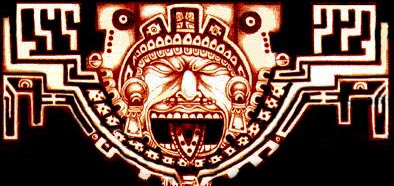

HISTORY
The territory that is now Guyana was first charted by Spanish explorers in 1499. By the mid-18th century Dutch settlers and traders had prevailed over rival Spanish and British expeditions. Although formal possession fell to the British in 1814, the Dutch system of administration persisted during most of the precolonial period (the colony of British Guiana came into being in 1831). During the years of British rule, the Native American population was reduced to a tiny minority by large influxes of African and East Indian peoples. Guyana received its first constitution under the British administration in 1928, but universal suffrage was not granted until 1953.
In 1961 Guyana achieved full internal self-government, and the People's Progressive Party (PPP), under the leadership of Cheddi Jagan, gained a majority in the legislative assembly. In 1962 Jagan introduced a program of severe economic austerity that caused violent riots and a general strike. British troops were called in to restore order in February 1962 and again in 1963. In 1963 the disorders took on racial overtones; persons of African descent clashed with the East Indian supporters of Jagan. When calm was restored, the nation was left on the brink of economic chaos.
Following constitutional conferences between Guyana and Great Britain in 1962 and 1963, elections were held in late 1964. The PPP again received the most votes, but failed to gain a majority. The British government thereupon called on Forbes Burnham, leader of the minority People's National Congress (PNC), to form a coalition government.
In 1965 the British Guiana Independence Conference met in London, and a new constitution was approved. On May 26, 1966, Guyana was declared an independent nation. It joined the United Nations in 1966. Guyana became a charter member of the Caribbean Free Trade Area (CARIFTA) in 1968. Elections that year confirmed Burnham in office. On February 23, 1970, Guyana was proclaimed a republic, and Arthur Chung was named president. The PNC won again in 1973.
In the early 1970s Guyana established diplomatic relations with China and several other Communist nations. In the economic sphere, an investment plan was adopted in 1973, calling for expenditure of $1.15 billion by 1976. The country aimed at self-sufficiency in agriculture, the development of oil resources, and a greater voice in the development of its bauxite deposits and profits from them. The government assumed control of all foreign trade in 1974.
Guyana was the scene of the Jonestown mass suicide and murder in 1978, when more than 900 members of a religious cult, primarily U.S. citizens, took poison on orders of their deranged leader, James Warren ("Jim") Jones.
In 1978 the term of the National Assembly was extended for a year beyond its five-year limit in anticipation of a new constitution; it was extended again in 1979. After the new socialist constitution was put into effect in 1980, Prime Minister Burnham was elected president and given most state powers. The PNC retained its overwhelming majority in the assembly, but an international team of observers questioned the validity of Burnham's victory. He governed until his death in 1985, and was succeeded by Desmond Hoyte. Elections that same year confirmed PNC control of the assembly and Hoyte as president. Hoyte remained in office until October 1992, when, in an internationally supervised election, Jagan and his People's Progressive Party returned to power.



